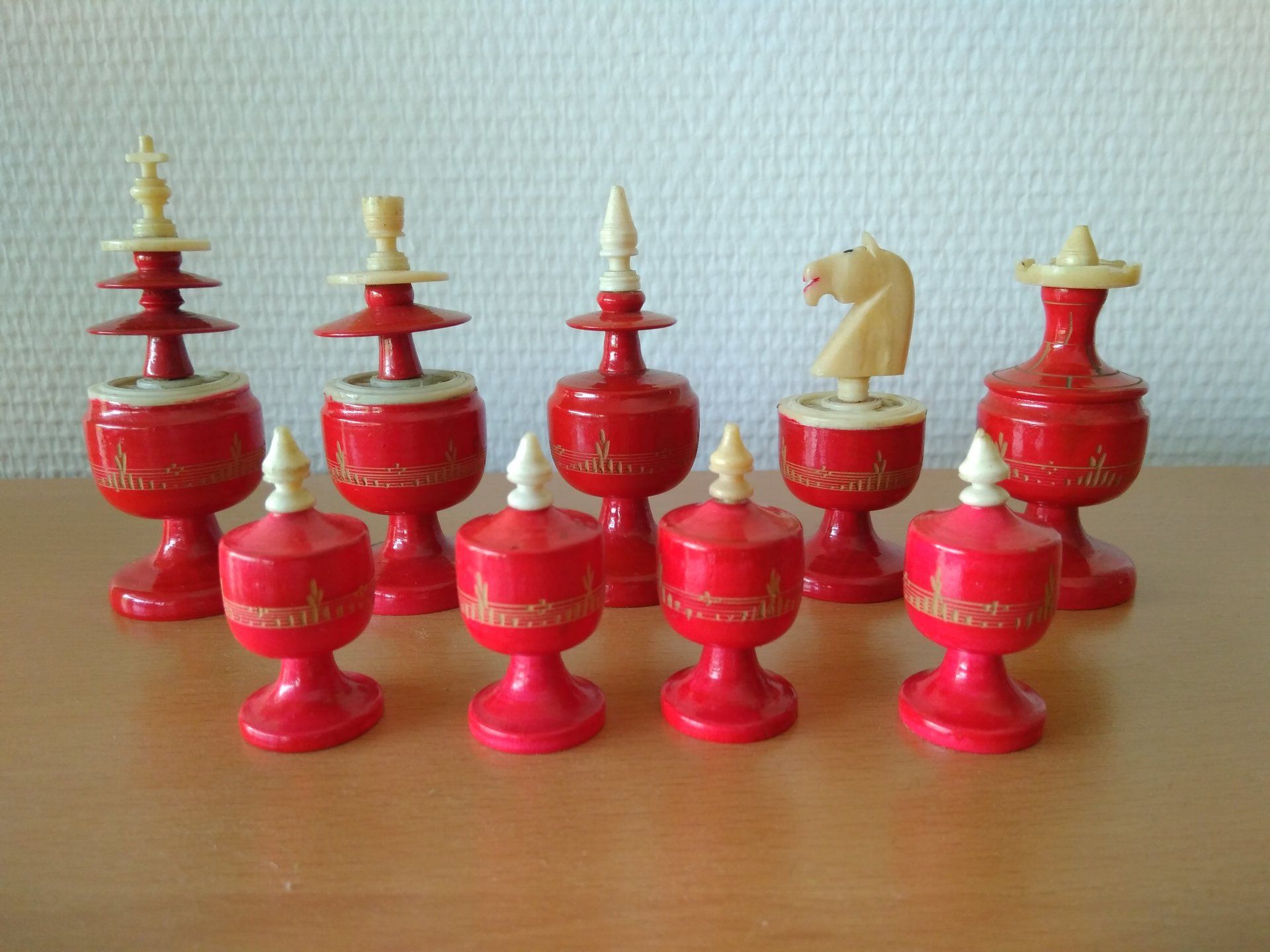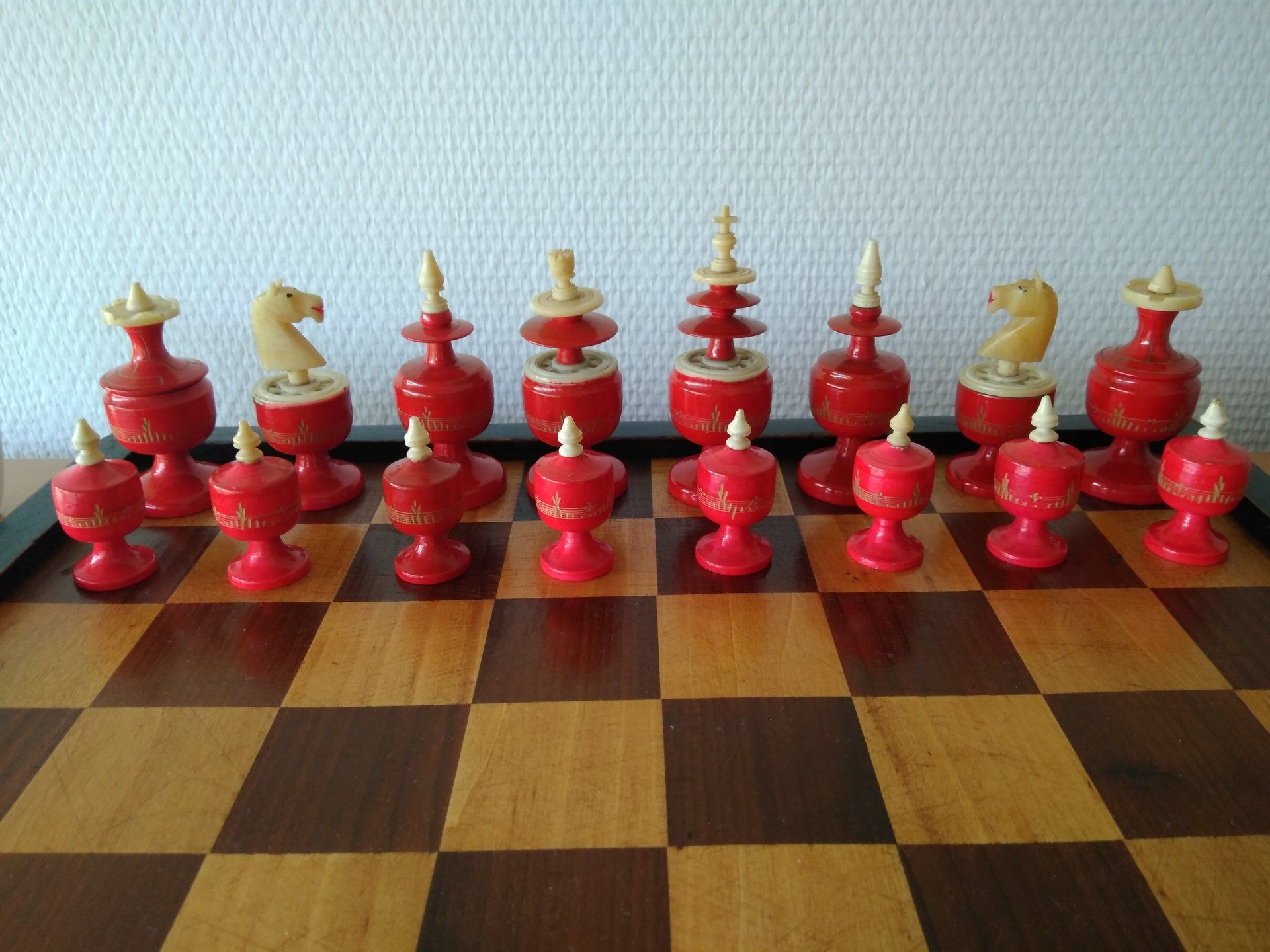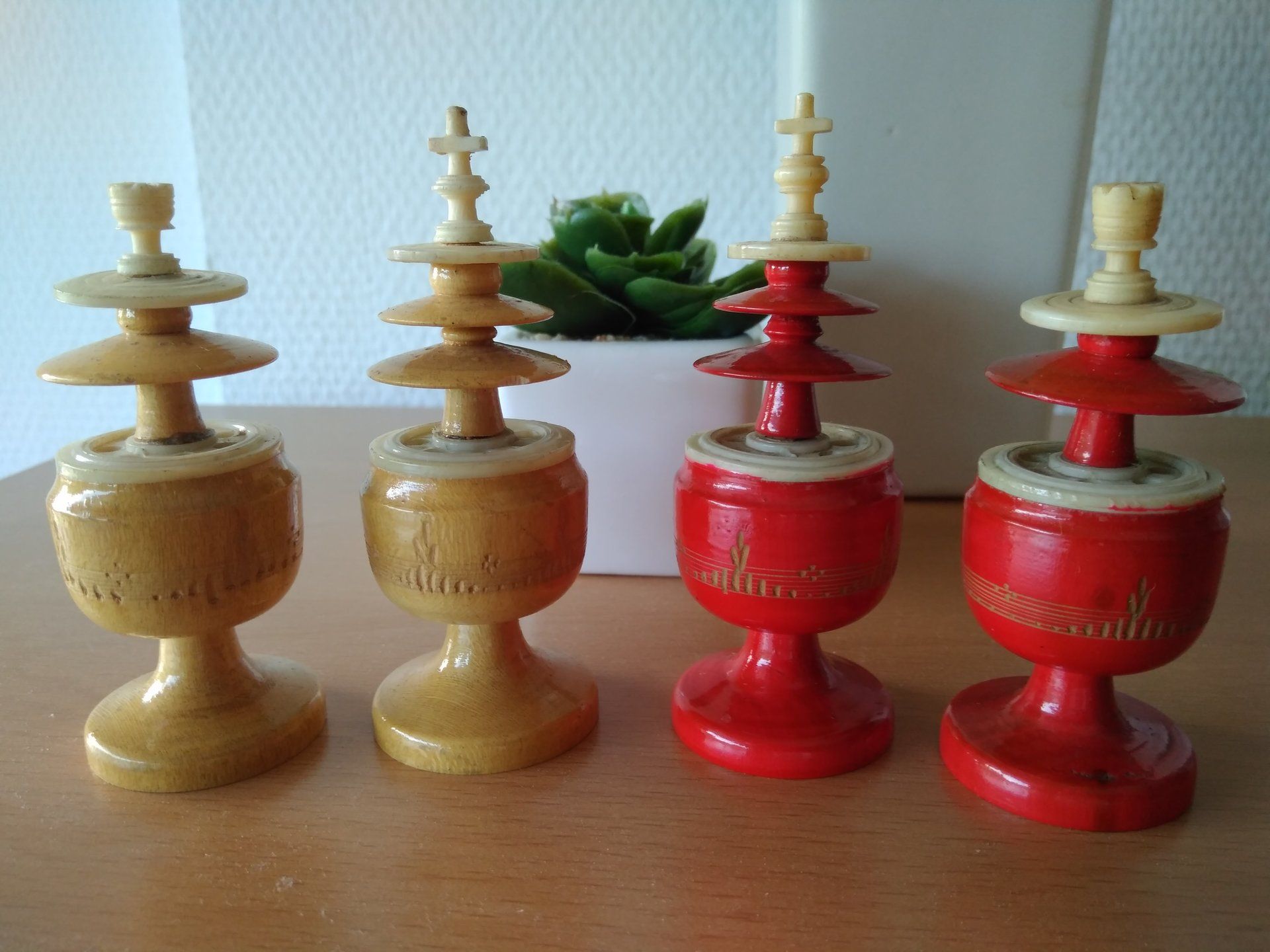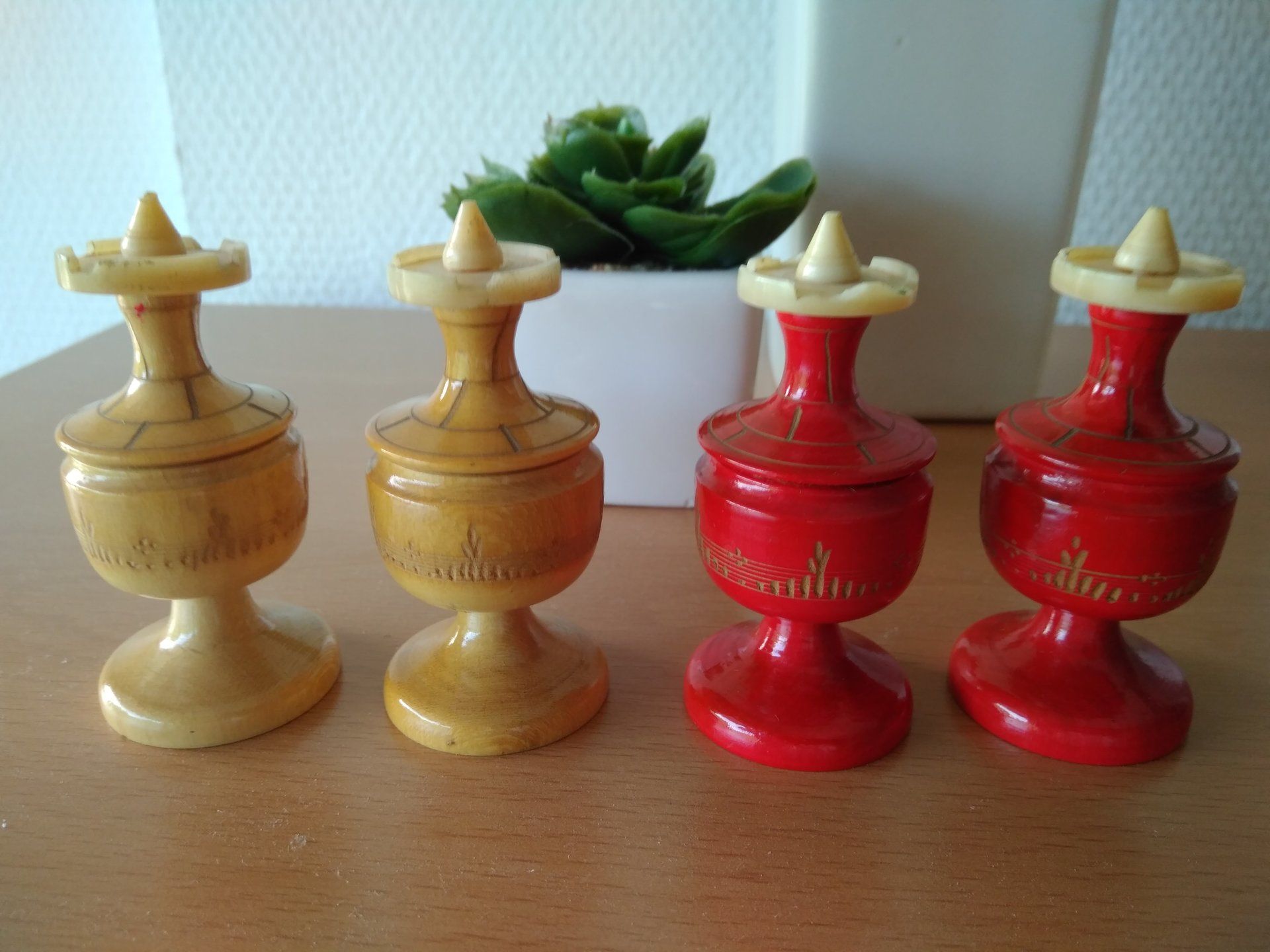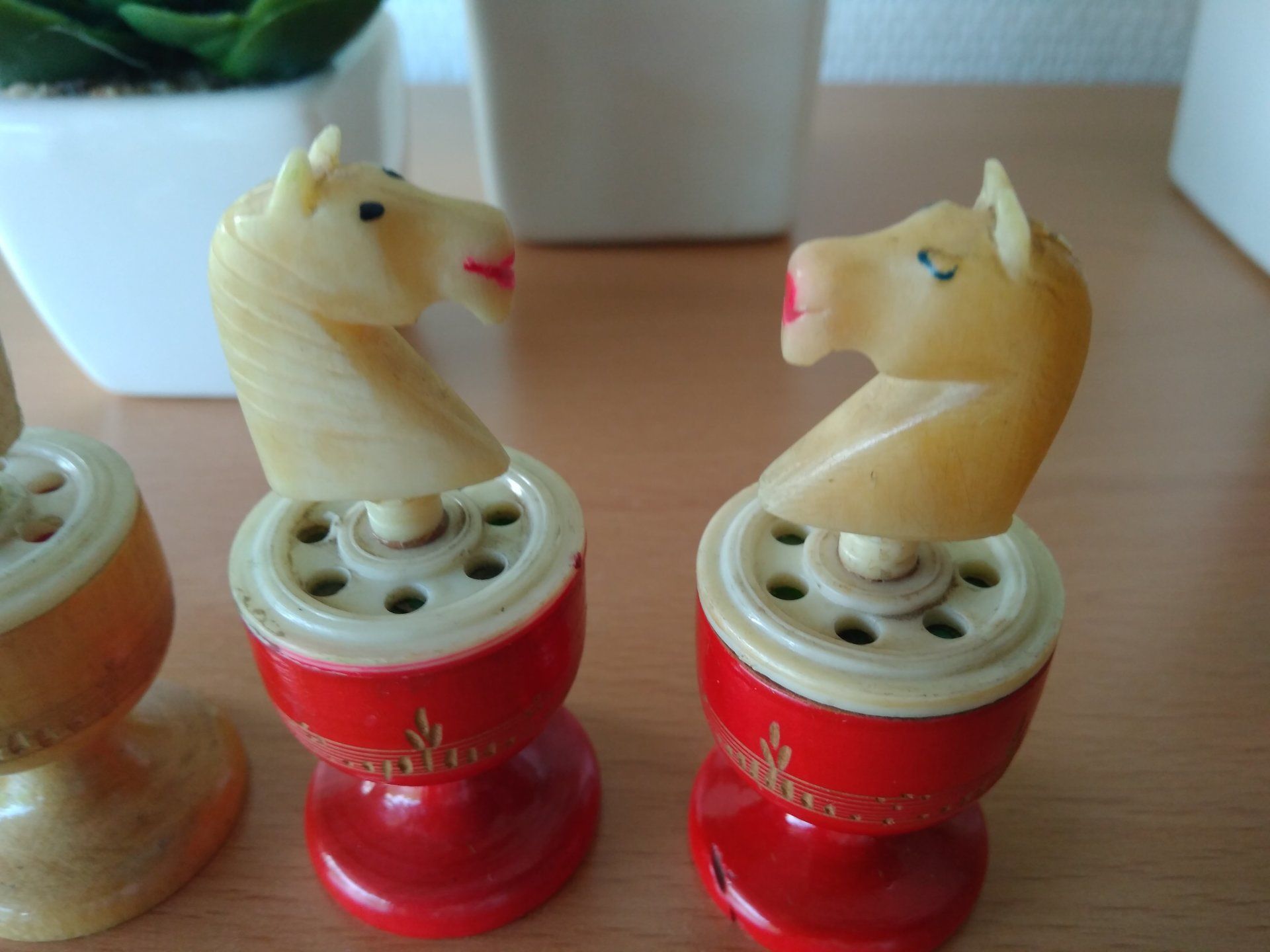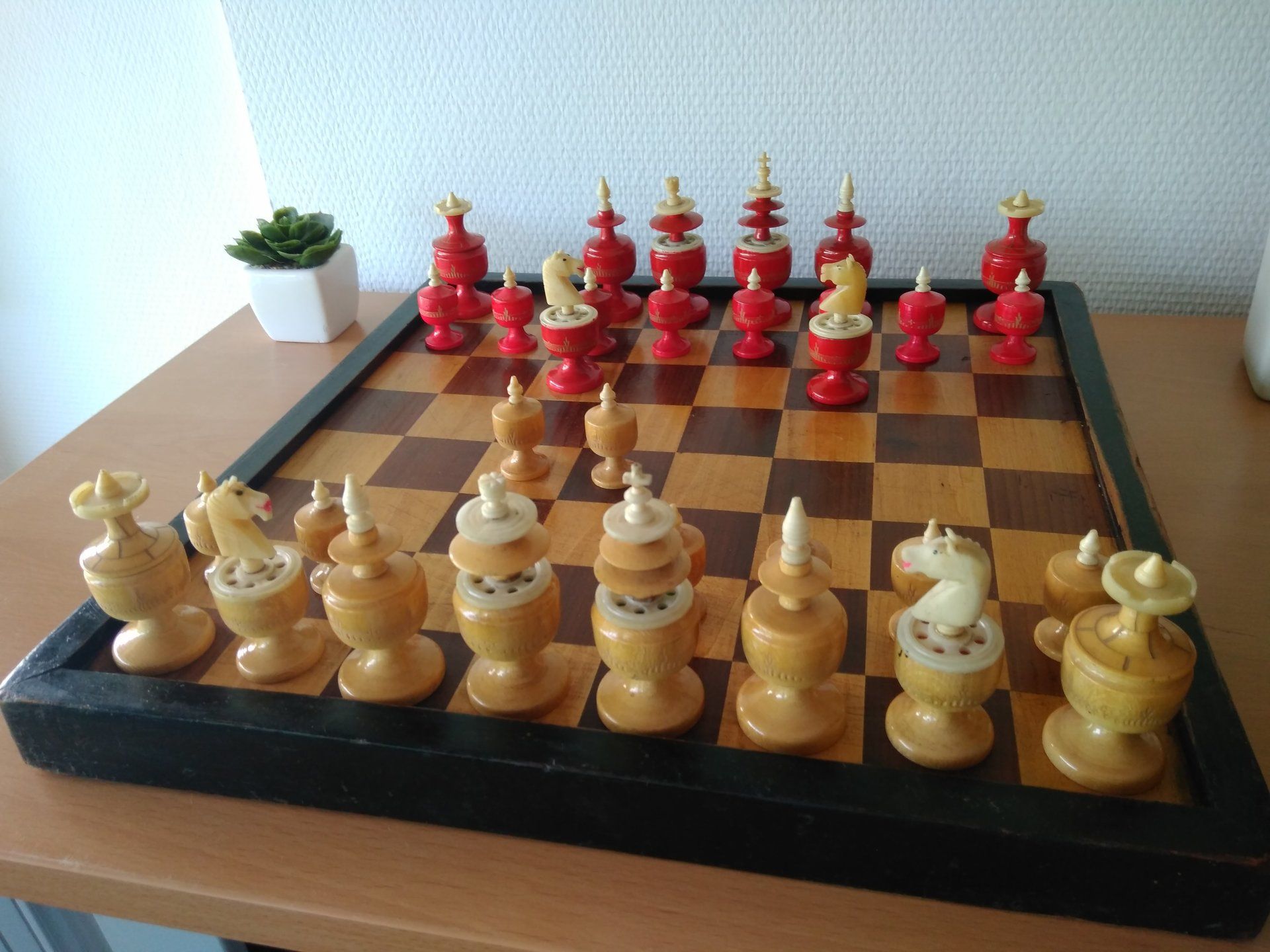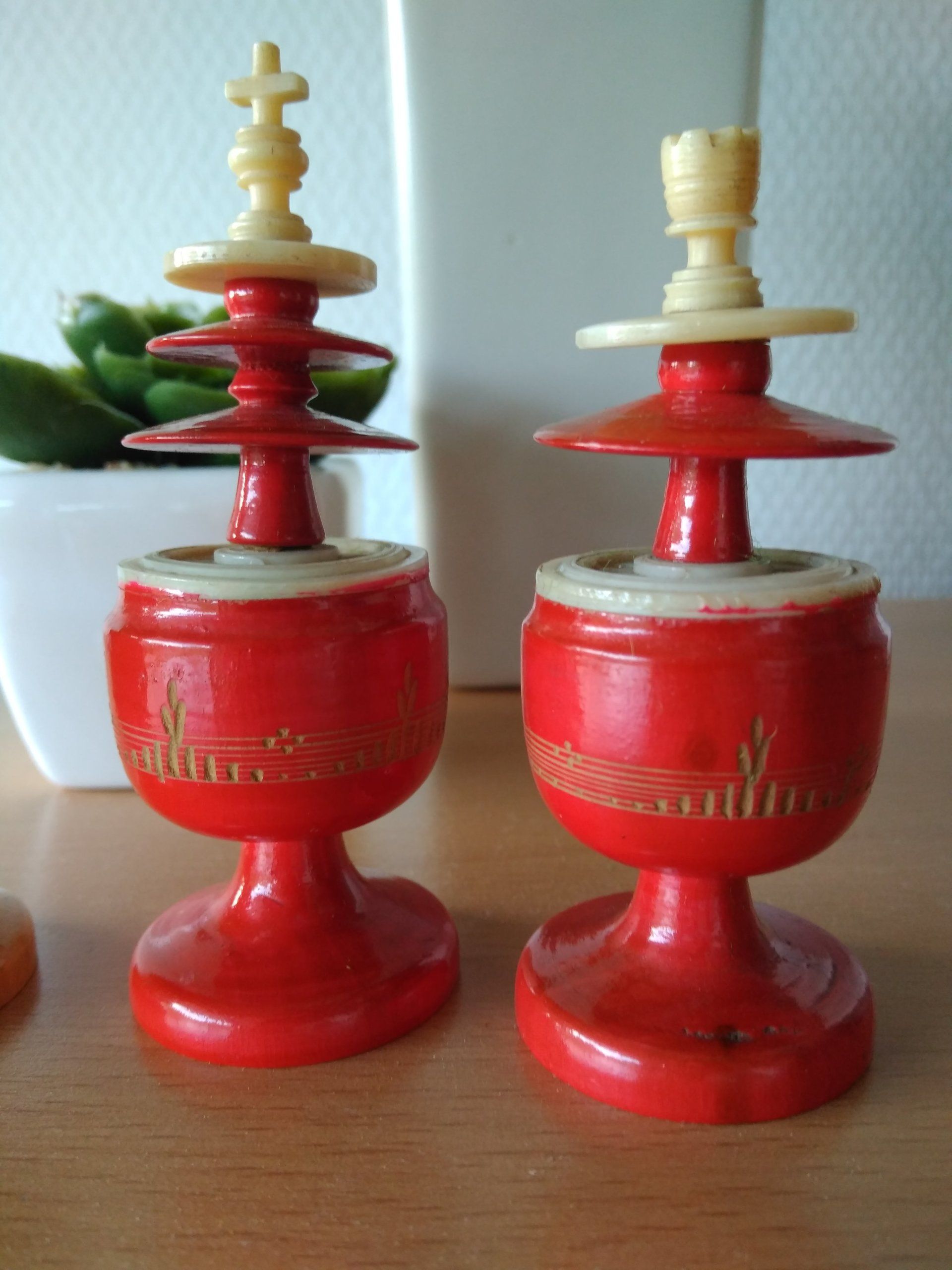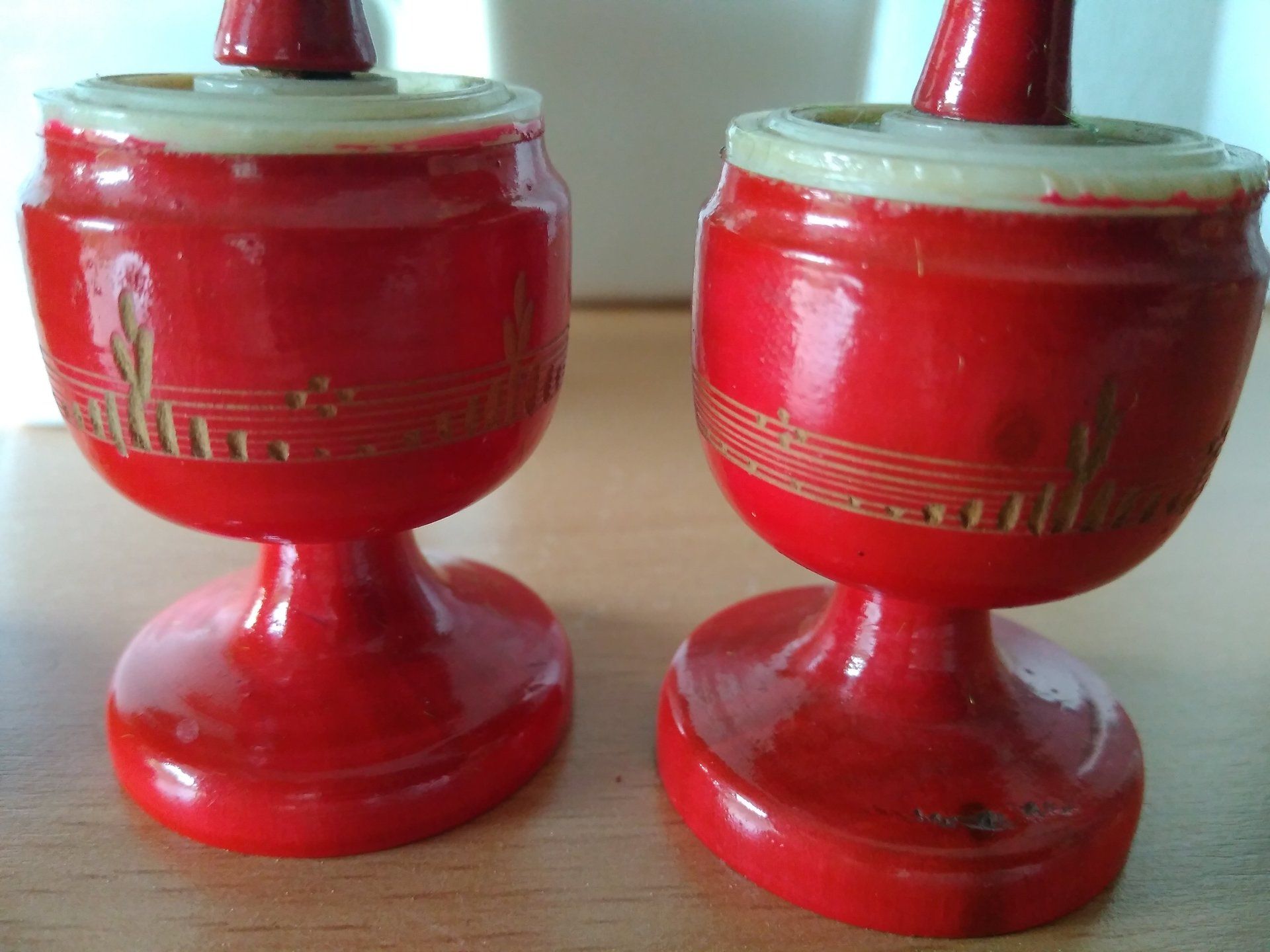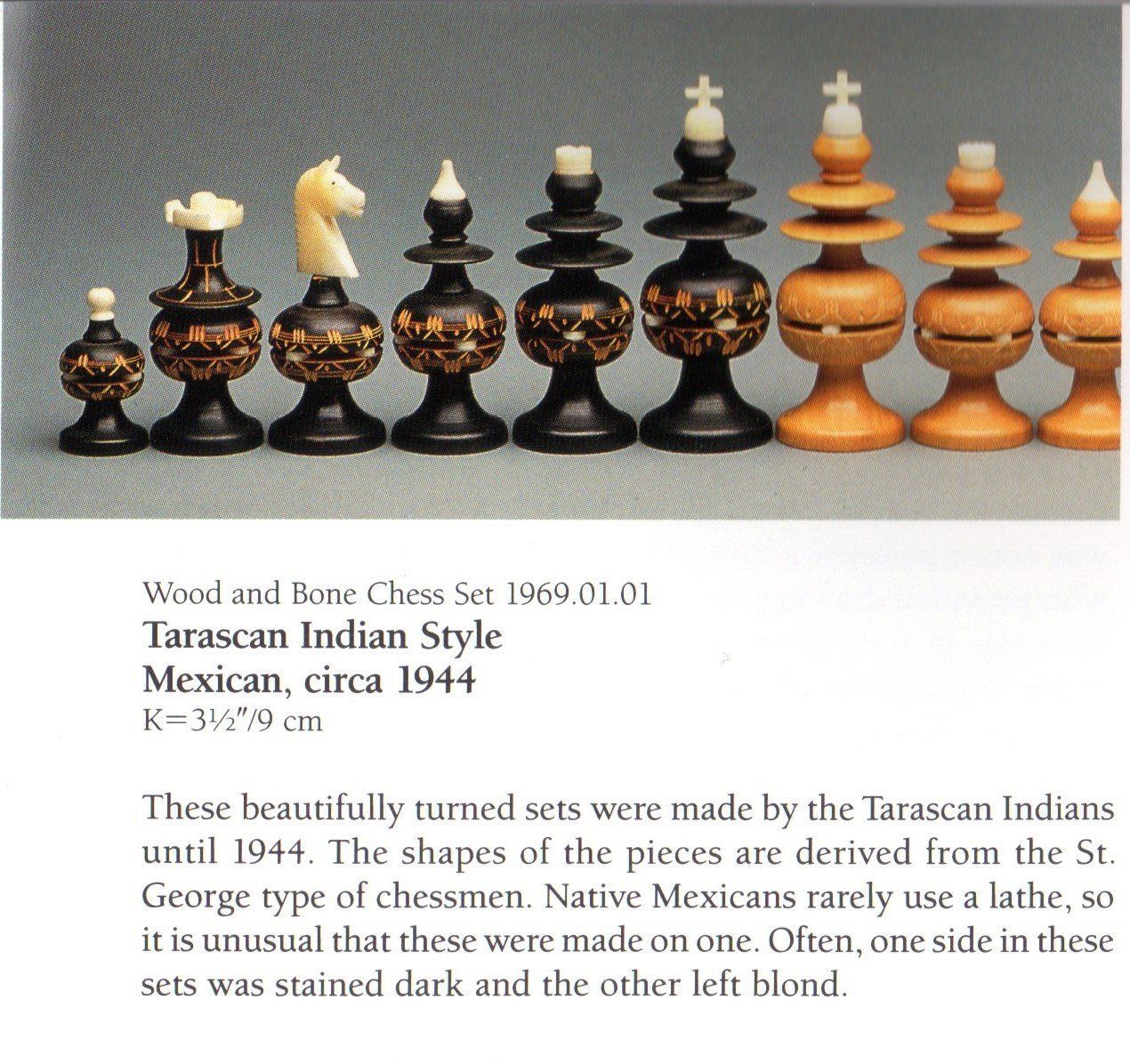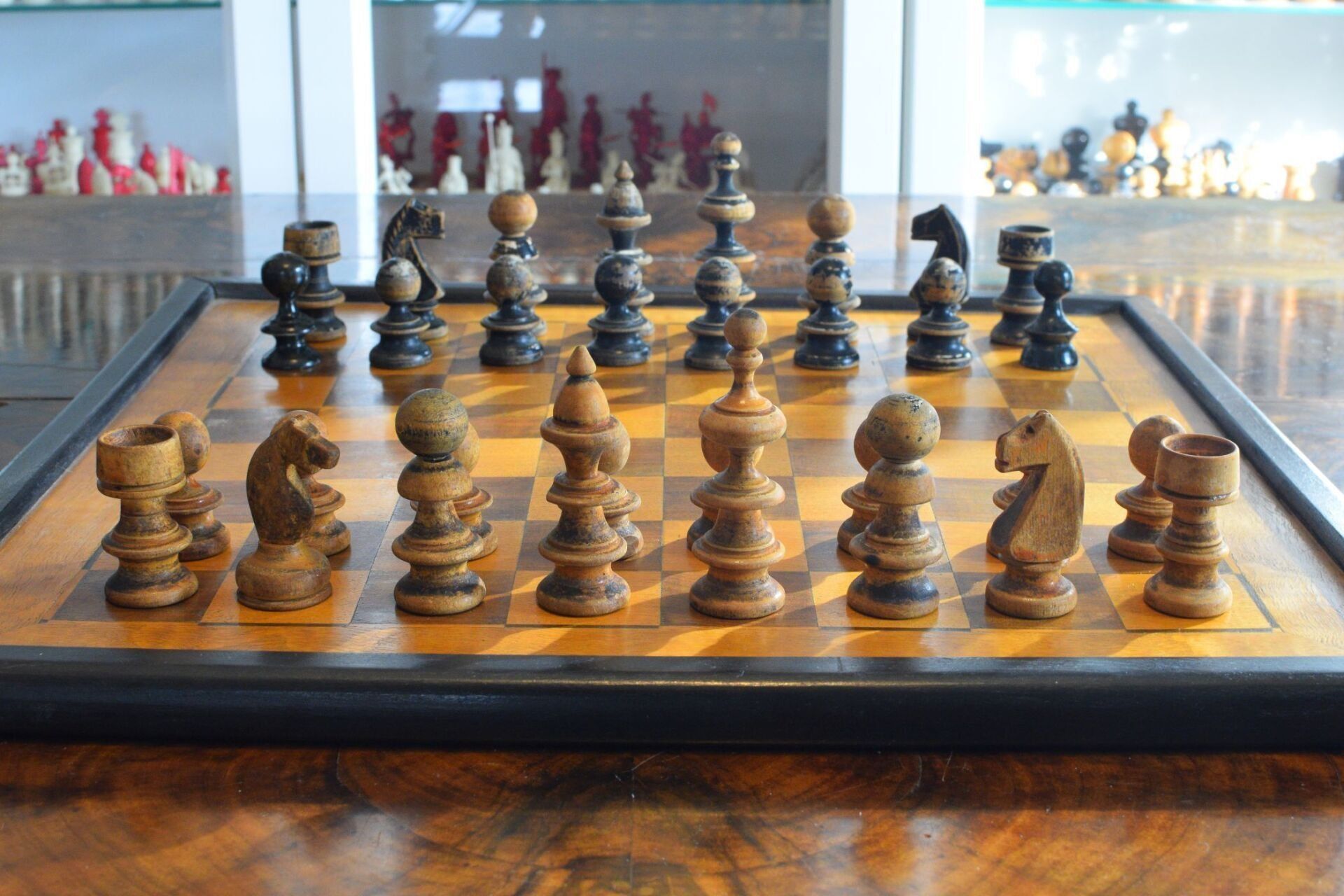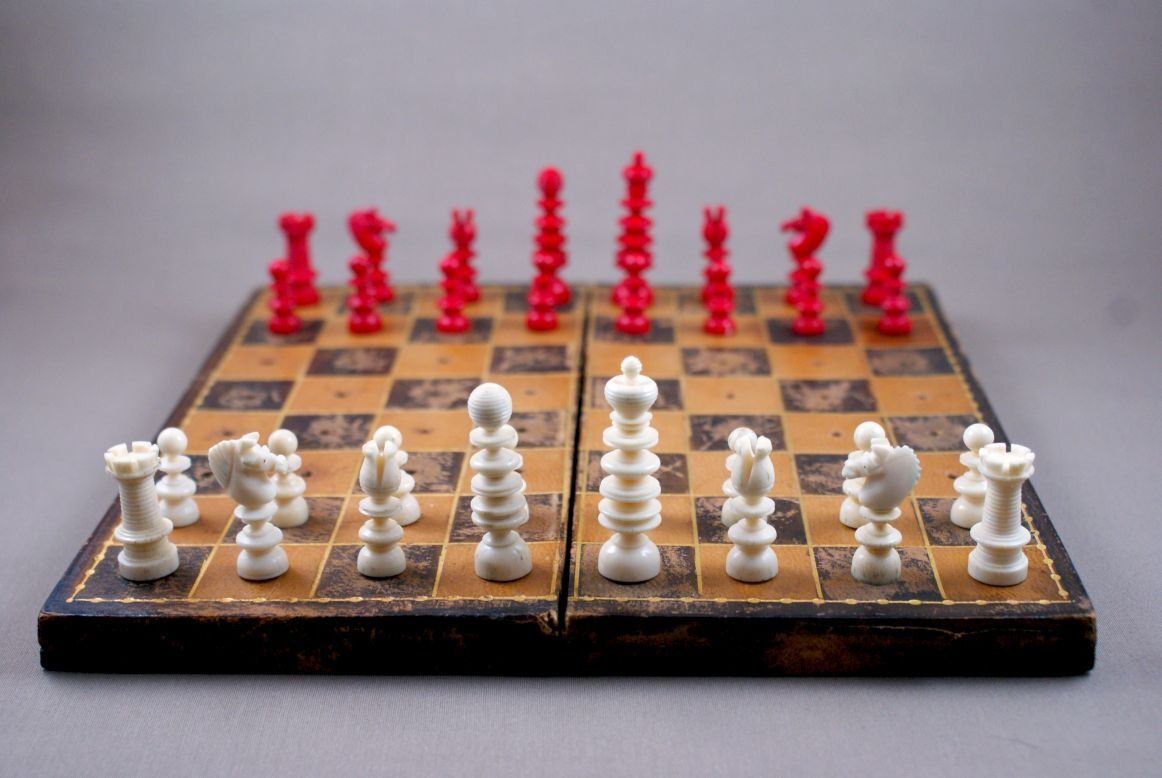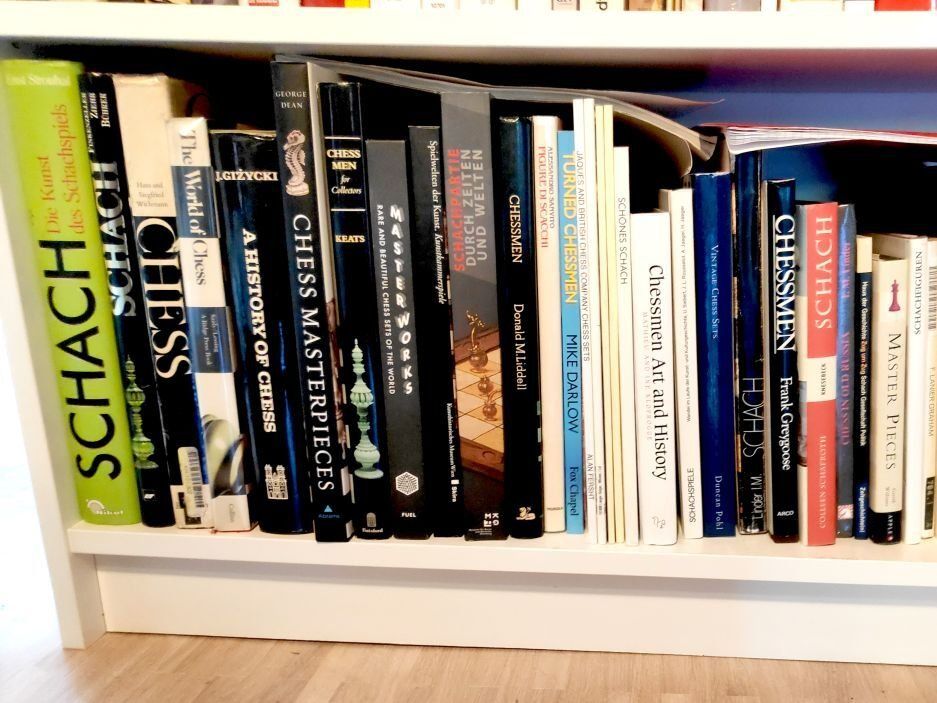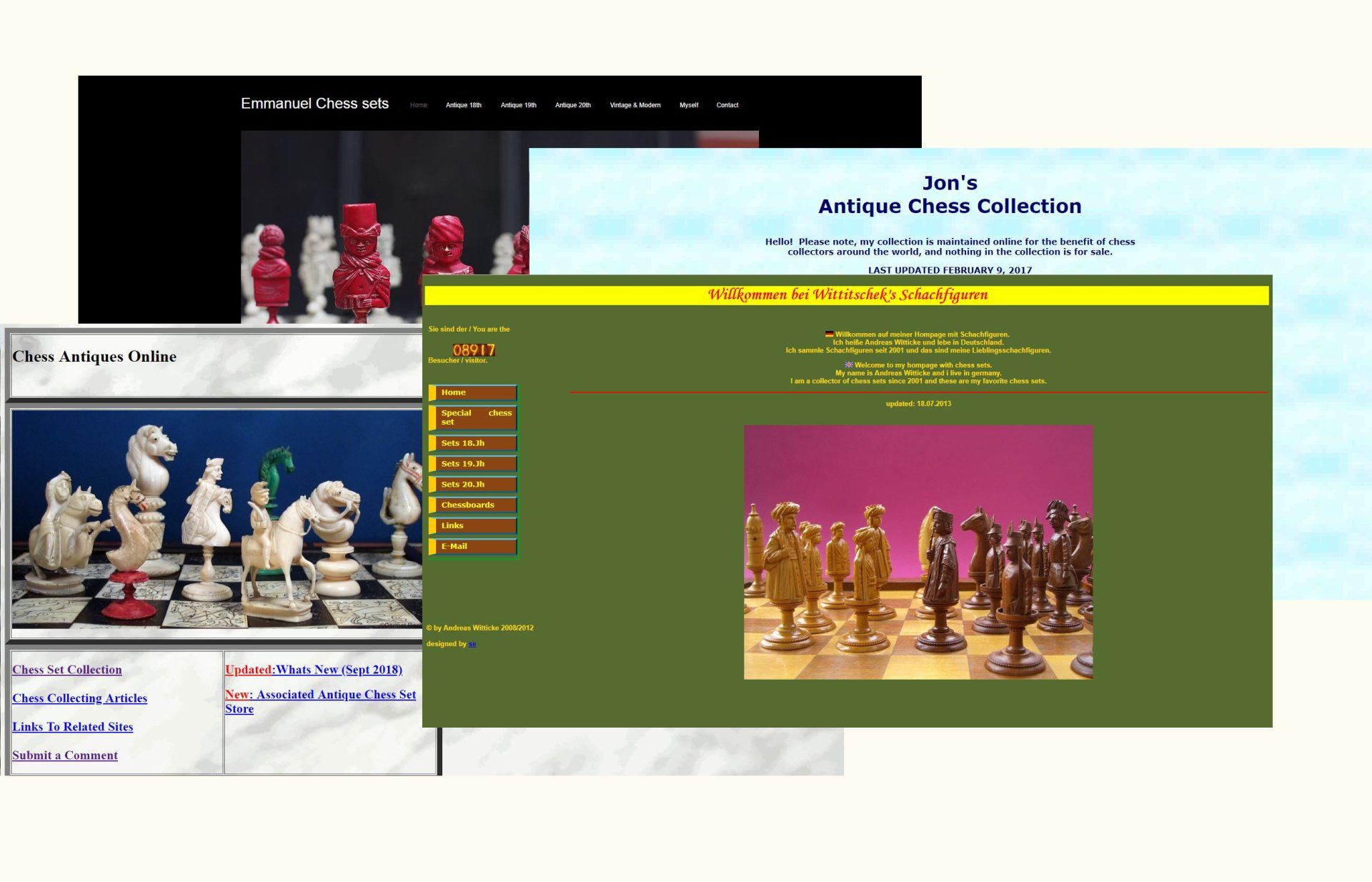Mexican Tarascan Chess Set, 1940-1960
Normally, such set would not be my cup of tea, but for this one I made an exception, mainly because of the entire history behind the set. The pieces are made of wood and bone. I bought the set from a seller, who inherited the set from his late father. His father bought it in the 1950's in Paracho, which is a small city in the Mexican mountains. The style of the set is Tarascan, which fits to the aforementioned place of origin, as Tzintzuntzan, the former capital of the Mesoamerican Tarascan Empire, located on the shores of Lake Pátzcuaro, is only some 50 miles east of Paracho.
Sets of similar style (albeit much more elaborately crafted) are to be found in the collection of the Metropolitan Museum of Art in New York and the Maryhill Museum of Art in Goldendale/WA. I included a picture of the website of the MET as well as a scan from Colleen Schafroth's "Sculptures in Miniature: Chess Sets from the Maryhill Museum of Art". According to the information given there, such sets were produced by Tarascan natives until 1944.
An interesting detail are the thin lines with small dots carved into the pieces. To me, they look very "musical" (either note lines or fingering charts), which is interesting insofar as Paracho is also called the "Guitar Capital of the World". Paracho has a century old tradition of producing very fine guitars and according to the seller, the craftsman who created the chess set was a local guitar maker.

